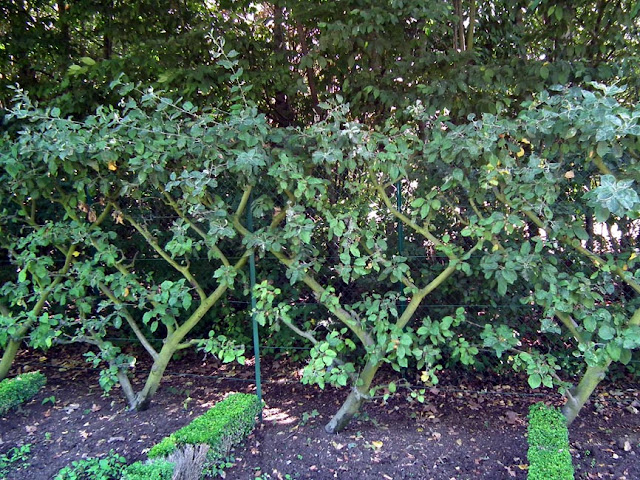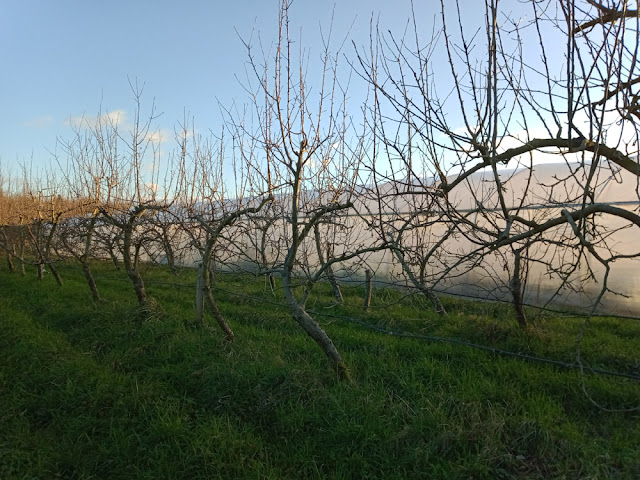Edmond Bouché (1889 - 1960) was a student at the agricultural high school at Angers. Professor Thomas taught there and Bouché became his son in law. In 1920 he developed a method of inclined fruit tree hedges which resulted in notable gains in productivity. He published his method in his final work in 1953.
 |
| Apple trees at the Prieuré de Cosmes trained in a version of the Bouché-Thomas style. |
In this method the trees are planted as 2 metre bare rooted scions at a 30 degree angle, with the graft point buried (very important), 2.5 metres apart (can be more for apples, less for pears), and the branches are positioned at 30 degrees above horizontal. In his original method the trees alternate so they incline in turn to the right and then to the left, but I noticed that they seem to be more often planted all inclining the same way. Once trained the branches form a 30 cm grid. The trees are not pruned, just trained. Edmond Bouché felt that his technique was working with nature, and therefore beneficial to the health of the tree. A 15 year old tree trained like this would produce 50 kg of fruit and be resistant to disease.
 |
| Old apple trees at my local organic orchard, trained in something like the Bouché-Thomas method. |
Here are the instructions for planting a Bouché-Thomas fruit tree hedge -- in French, for primary school children, from the 1960s...[link]

2 comments:
Susan, there is a nice line of these at Valmer in the bottom garden....
I thought that they'd been done decoratively to border a path, but....
I think that they are some done the Bouché-Thomas way.....
they look just like the top picture and are always covered in apples and pears...
The only difference being is that they are heavily limewashed.
Le Pré de la Forge: I don't remember them from Valmer, but that would be exactly the sort of place I would not be surprised to encounter this style. I have photos of Valmer, but it's currently too much bother to unearth and go through them.
Post a Comment